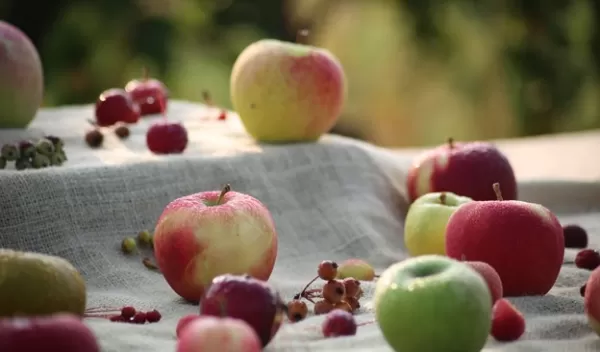
Silk Road contains genomic resources for improving apples
The fabled Silk Road -- the 4,000-mile stretch between China and Western Europe where trade flourished from the second century B.C. to the 14th century -- is responsible for one of our favorite and most valuable fruits: the domesticated apple (Malus domestica).
Snack-packing travelers would pick apples at one spot, eat them and toss their cores many miles away. The seeds grew into trees in their new locations, cross-bred with wild species, and created the more than 7,000 varieties of apples that exist today.
Hybridizations with wild species have made the apple genome very complex and difficult to study. A global team of multi-disciplinary researchers -- co-led by Zhangium Fei, a scientist at the Boyce Thompson Institute -- tackled this problem by applying cutting-edge sequencing technologies and bioinformatics algorithms to assemble complete sets of chromosomes for the domesticated apple and its two main wild progenitors.
The researchers, funded in part by the U.S. National Science Foundation, discovered that the apple's unique domestication history has led to untapped sources of genes that could be used for improvements in size, flavor, sweetness and texture.
"Plant breeders could use this detailed information to improve upon traits that matter most to consumers, which today is primarily flavor," says Fei.
"Perhaps more importantly," he adds, "the information will help breeders produce apples that are more resistant to stress and disease."
The research is described in a paper published in Nature Genetics, with authors from BTI, Cornell University, Cornell AgriTech, the U.S. Department of Agriculture and the Shandong Academy of Agricultural Sciences.
In the current work, the researchers sequenced, assembled and compared the full reference genomes for three species: Gala, the European crabapple and the Central Asian wild apple. The latter two species are the apple's two main wild progenitors, which together account for about 90% of the domesticated apple's genome.
The results provide apple breeders with detailed genomic roadmaps that could help them build a better apple.
"This is an excellent example of how advances in DNA sequencing technologies and comparative genomics have revealed the tremendous genetic potential hidden in wild species, and of how breeders have used these resources to develop an economically important and nutritious crop," says Diane Okamuro, a program director in NSF's Division of Integrative Organismal Systems.


